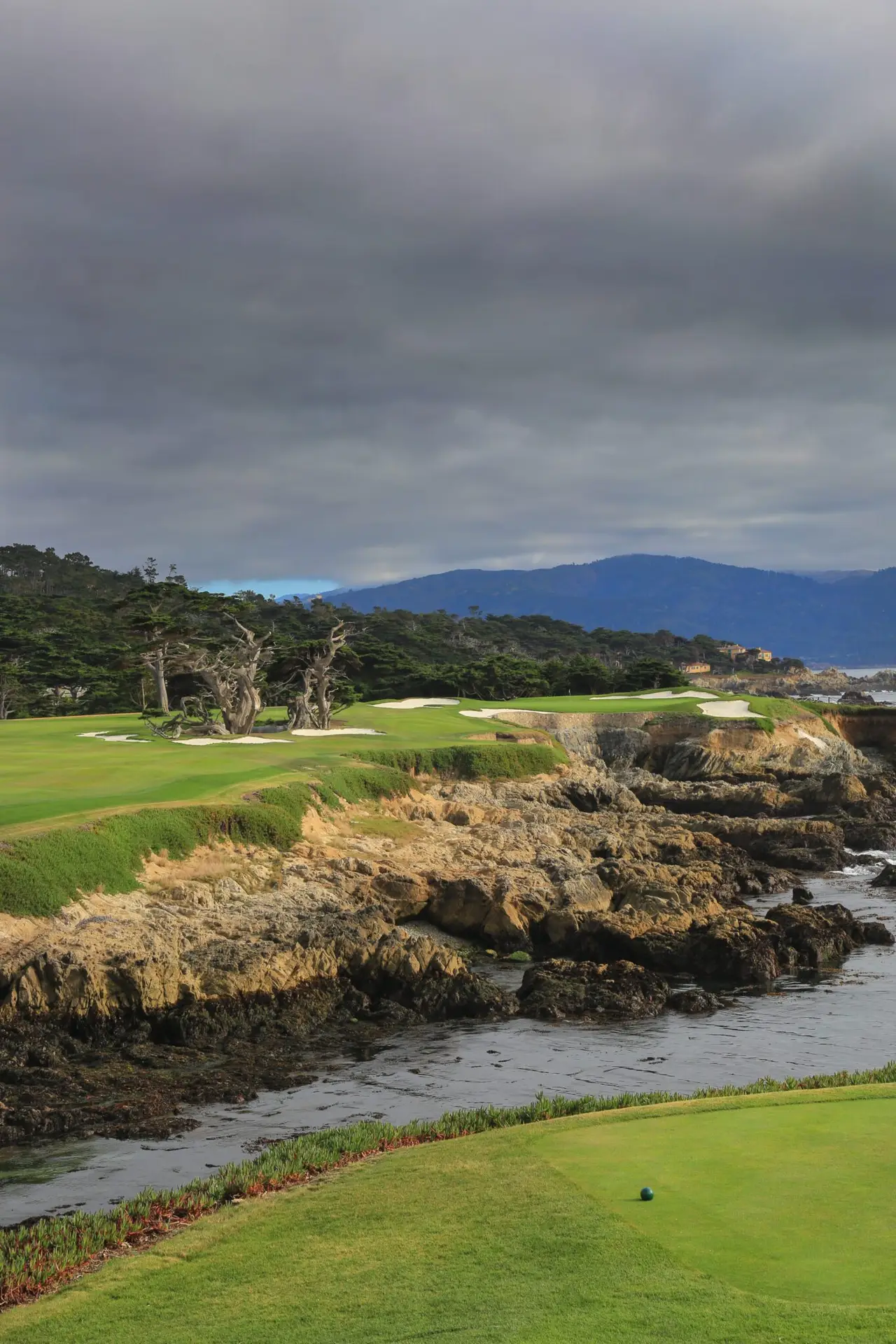Cypress Point reigns supreme for arboreal splendor
Ever since the Oakmont Chainsaw Massacre of 1993—when a determined bloc carried out a deforestation in early dawn darkness—elite clubs have pitted tree-huggers versus the original-intent crowd. Do trees belong on golf courses? Golden Age greats Donald Ross, George Thomas Jr., Harry Colt, and A.W. Tillinghast all railed against trees. Curiously, however, each man also defended their use. Alister MacKenzie was another who espoused both sides. No matter which camp you fall in, it’s undeniable that when deployed properly, trees add definition, character, beauty, and strategic interest. Whose trees are tops? No course immerses a golfer in arboreal splendor quite like MacKenzie’s Cypress Point.
In laying out Cypress Point, MacKenzie insisted on leaving select cypresses right where they grew. “They have a weird, gnarled appearance; their trunks and branches become sharply elbowed and they grow into all kinds of fantastic shapes. Attempts have been made to plant them elsewhere but without success.”
Cypress Point isn’t solely about cypresses; holes 4 through 7 twist through an enchanted forest of Monterey pines. The cypress trees are unique, however, as they grow only in two tiny populations on the central California coast. How special are they? Nearly five years ago, LINKS asked 11 prominent architects and design scholars to identify the greatest trees in golf. Four of them named the cypresses at Cypress Point.

Tom Doak pinpointed the stand of trees to the right of the 14th fairway, while Gil Hanse spoke of the trees in the middle of the 17th hole. Photographer Jon Cavalier tabbed the spindly cypress to the left side of 16 between the tee and the green. Most comprehensive in his analysis was Bill Coore.
“No course possesses beautiful trees that provide a strategic element quite like Cypress Point does,” said Coore. “Trees have a significant influence at the 1st, 5th, 14th, and 17th, but perhaps the most beautiful and strategic of them all are the trees on the 18th—a very underrated hole. I think it’s a stunningly beautiful, interesting, and strategic hole, made so by its trees and the thoughtful way MacKenzie and [Robert] Hunter routed its fairway through the Cypress grove.”
Perhaps the greatest shot among the Cypress cypresses occurred at the oceanside par-four 17th. A stand of large, gnarly cypresses resides in the right-center of the landing area about 250 yards out. As recounted by George Peper in Golf Courses of the PGA Tour, it was here in 1951 that Byron Nelson hit the most daring shot of his professional life.
“Nelson was leading the Crosby that year when he knocked his drive dead-behind those cypress trees. From there, he played a hook out over the surf. It finished 12 feet from the pin, and Nelson went on to win the tournament by a shot. It was the last of his 52 career victories.”
Not to be overlooked are the autumnal hues of the oaks and maples of the Northeast and Midwest courses, the tall, graceful pines of Augusta National and Pinehurst, and the subtle allure of the eucalyptus at Riviera. For sheer memorability, however, the trees of Cypress Point stand tallest.
3 More Titans of Timber
For golfers who relish being pleasantly cocooned by magnificent trees without being suffocated, Canada’s Capilano is a stellar specimen. Stanley Thompson sculpted this alpine layout in 1937 from hilly, rocky ground studded with towering Douglas firs. Amid the club’s 20,000 trees, Thompson’s inspired routing and gaps in the forest furnish players with Vancouver city views and vistas of tree covered mountains.
The rare Alister MacKenzie creation that anyone can play, Northwood occupies one of the truly special tracts in golf. Its nine flattish holes zigzag through massive redwoods near the California coast, one hour north of San Francisco. Little of the good doctor’s architecture remains, but the thrill of teeing it up while shaded by the largest, noblest trees in existence outweighs any design deficiencies.

Graced by sturdy, twisty limbs festooned with Spanish moss, the southern live oak is a ubiquitous presence at courses along the Southeastern U.S. coast. Nowhere are they more grandly presented and strategically positioned than at Yeamans Hall near Charleston, S.C. Its architect, Seth Raynor, described the live oaks as “magnificent…giving a warmth to the course in the wintertime which is very delightful”






